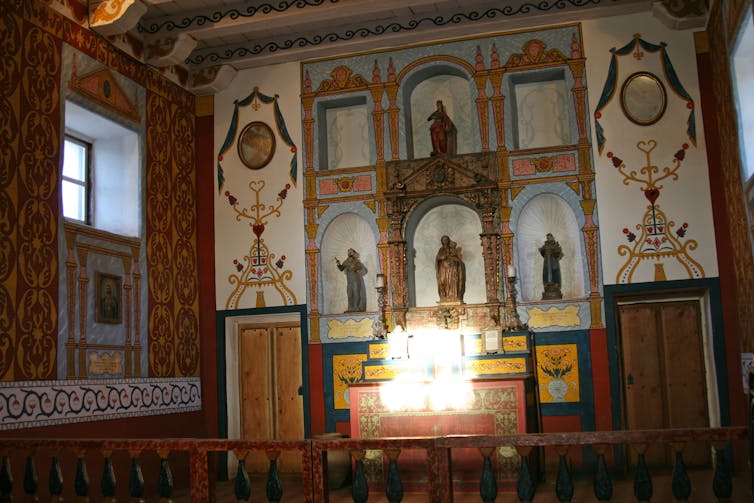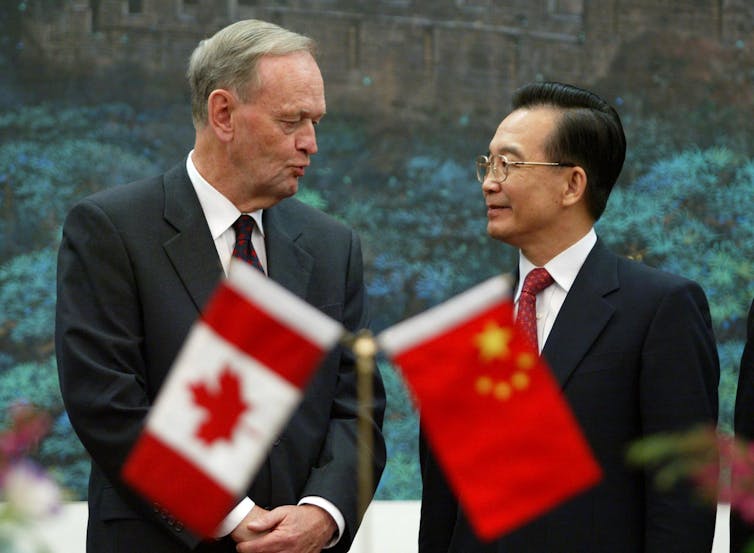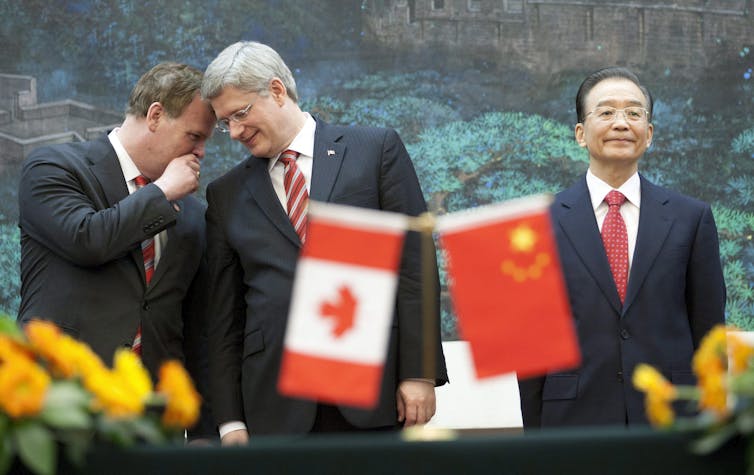Saanich Peninsula-based recordings key part of worldwide data
Dec. 20, 2022

Earthquake damage is seen at the Humboldt Creamery building in Loleta, Calif., Tuesday, Dec. 20, 2022. A strong earthquake shook a rural stretch of northern California early Tuesday, jolting residents awake, cutting off power to 70,000 people, and damaging some buildings and a roadway, officials said. Two injuries were reported.
A hearty shake south of the border serves as a good reminder – and information-gathering tool – for coastal B.C. residents, says one seismologist who works on the Saanich Peninsula.
John Cassidy, an earthquake seismologist with National Resources Canada, tweeted images showing shaking on Vancouver Island when a 6.4 magnitude earthquake struck California Tuesday (Dec. 20).
There was no shaking felt in B.C., nor a tsunami expected after the earthquake at 2:34 a.m. near Ferndale, about 345 kilometres northwest of San Francisco, just offshore and about 16 km deep.
“It is a really active area,” Cassidy said, noting the region had a similar event, a 6.2, exactly a year ago.
The 2 a.m. quake in California was enough to frighten and cause damage to nearby communities.
Cassidy explained Greater Victoria residents get earthquakes that size off Vancouver Island, but 50 or 100 kilometres off shore – so we feel them but it’s not damaging or frightening.
But what they all are is informative.
Thousands of people reported feeling shaking, of varying degrees, across northern California, southern Oregon and even as far as Seattle. Closer to home, the seismometer in the Institute of Ocean Sciences building in North Saanich recorded the Island’s waves. The sensitive instruments are designed to detect tiny earthquakes that happen every day that no one even feels.
To study earthquakes you need data from different locations, with accurate times and accurate recordings, Cassidy said.
“There is a lot that can be learned from recordings, not just from very close to the earthquake, but 800 to 900 km from the earthquake,” he said.
“One of the things you want to learn is the fault it occurred on, how much it moved, how it moved. Looking at data from all sides and distances you can pin down what happened.”
READ ALSO: Vancouver Island slides west, tremors could signal tectonic shifting
It also serves as a timely reminder the west coast of North America is a very active earthquake zone.
“It’s a good reminder to check the earthquake kits and update the plan and know what to do when shaking begins,” Cassidy said. “Some of the world’s largest earthquakes have occurred here. But it’s been a long time and it’s easy to forget.”
Black Press Media has prepared an emergency guide to help residents be ready. To learn more, click here.
Wed., Dec. 21, 2022
RIO DELL, Calif. (AP) — Outside the Dollar General, the store manager ticked off the items she had to share with families trying to jumpstart their lives after an earthquake jolted them from their beds and cut off the town’s water and power.
“Batteries or candles?” a worker asked a woman toting a toddler on her hip, and handed the child a plastic candy cane filled with sweets.
Just days before Christmas in Rio Dell, the former lumber town grappled with the aftermath of early Tuesday’s magnitude 6.4 earthquake that injured at least 17 people, shook homes off foundations, damaged water systems and left tens of thousands without electricity, some for more than a day.
By Wednesday afternoon, power was restored to the homes of tens of thousands of residents, and Christmas lights wrapped around trees on the community’s main street came back on. Still, about 2,500 people remained without electricity and most of the town’s 3,500 residents lacked safe drinking water, according to Pacific Gas & Electric and local officials.
Small communities that bore the brunt of a strong earthquake on the coast of far Northern California remain without power and under boil-water advisories. (Dec. 21) (AP video: Adam Beam)
Twenty-six homes were deemed unsafe, leaving an estimated 65 people displaced, most of whom were expected to be staying with family and friends, said Rio Dell City Manager Kyle Knopp. Another 37 homes were damaged, and even those that suffered no physical cracks required intense cleanup inside, where the floors are cluttered by knocked down shelves and broken dishware.
Along this stretch of Northern California’s coast, earthquakes are common, and people talk about them much like the weather. But the one that shook people from their homes was different to many who found themselves tossed violently from their beds and stumbling around in the dark of night in search of safety.
When his house began to shake, Chad Sovereign ran into his 10-year-old son Jaxon’s room, grabbed him, and dove under a door frame. The brick chimney collapsed, pulling the wall with it and leaving a gaping hole in their home.
“It felt like the end of the world,” Sovereign said. “I was telling him I love him. I didn’t say goodbye to him, (but) in my head I was. I was just telling him, ‘I love you, I love you, I love you,’ over and over.”
Sovereign said the family lost water and power after the quake, but luckily they could remain in their home. They filled up their bathtub with whatever water was left before the shutoff and used it to flush the toilets.
The quake was centered in nearby Ferndale, about 210 miles (345 kilometers) northwest of San Francisco and near the Pacific coast. The area is known for its redwood forests, scenic mountains and the three-county Emerald Triangle’s legendary marijuana crop — as well as the Mendocino Triple Junction, a geologic region where three tectonic plates meet.
On Wednesday, the community fire station was turned into a drive-thru hub. Residents pulled up their cars and had water loaded into their trunks, while a local food truck handed out tacos and burritos courtesy of World Central Kitchen. Other volunteers propped up folding tables and gave out apples, peaches, bagels and canned food.
What was once a bustling lumber town with shops in the 1970s is today a small, humble community made up of retirees, commuters and renters. When a nearby mill went bankrupt and a major thoroughfare moved, Rio Dell became a shadow of its former self, residents said. But it remains a place where people know each other and when reeling from disaster they can go to City Hall and seek advice on who can replace their broken windows — and get it, too.
Outside Dollar General, store manager Cassondra Stoner said she was told she could distribute water, batteries and candles but to hold off on other items until they could be inspected — something she couldn’t always do.
“I couldn’t help myself, and I gave somebody one ibuprofen and some baby diapers because I am not going to let a kid go without diapers,” she said.
The Dollar General is the main grocery in Rio Dell, replacing an Old West-themed mini golf course. There’s also a hardware store and a pizza place in a town used to quakes knocking things off shelves and causing damage to business inventory, locals said, but rarely so much to people’s homes and spirits.
“If you complain about one less than a 4-point-something or other, you’re a weenie,” said Sharon Wolff, editor of the Rio Dell Times local news website. ”We see news reports that this place had a 3.6, and it’s like, ‘Oh, please.’ ”
Nearby Ferndale, which draws tourists to its picturesque Victorian Village, also lost power and a key bridge to the community was shut down, but shopkeepers hoped to bounce back quickly once the lights came back on, said Marc Daniels, owner of Mind’s Eye Manufactory and Coffee Lounge.
“We know how bad it could have been,” said Daniels, whose shop occupies a two-story Victorian. “We feel like we sort of dodged a bullet this time.”
About 17 people were reported as suffering injuries. Two people died — an 83-year-old and a 72-year-old — because they couldn’t get timely care for medical emergencies during or just after the quake.
More than half of the 72,000 Humboldt County customers who lost electricity when the quake struck had power restored by evening that day. But some went without it — and water — throughout the night. Boil water advisories were issued for Rio Dell and parts of Fortuna because of damaged water systems. In Rio Dell, portable toilets were set up downtown.
Celia Magdaleno, 67, said she hauled a container of water from her neighbor’s swimming pool back to her home in order to flush the toilet. She said she took rainwater she had captured in a barrel outside and heated it so her husband could bathe before his dialysis appointment.
Having access to water “means a lot,” she said. “It’s a very big blessing for me.”
Nathan Scheinman, 24, said he hunkered down under four blankets but could barely sleep through the cold with the shock of the quake repeating in his mind. He lost gas, water and power, and had to drive to find a usable bathroom. Right now, Scheinman said rather than thinking about the holiday, he is trying to help people who come into the hardware store where he works with whatever he can in their time of need.
“I think in the Christmas spirit I want to be there for people the best way I can,“ he said.
__
Taxin reported from Orange County, Calif. Associated Press writer John Antczak in Los Angeles and photographer Godofredo Vásquez in Rio Dell contributed.




:format(webp)/https://www.thestar.com/content/dam/thestar/news/world/2022/12/21/my-dreams-are-over-taliban-ban-on-women-in-university-sparks-private-anguish-public-protests/split_classroom.jpg)
















